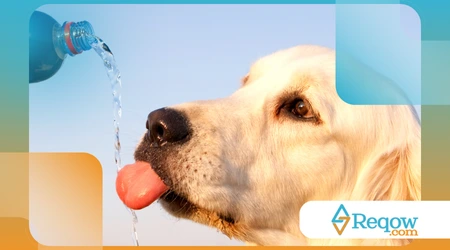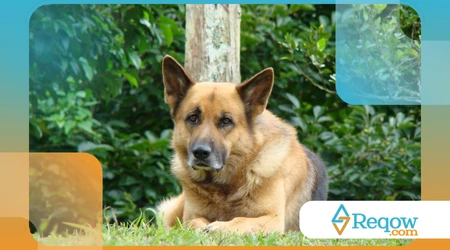What to do if your dog refuses to drink water during intense heat?

Dog refuses to drink water during intense heat. In this article, we'll unravel the mysteries behind your dog's refusal to hydrate, offering practical and effective solutions.
Advertisements
Get ready for a complete guide that will transform your pet's relationship with water on the hottest days.
The Silent Warning: Why Is Water a Challenge?
When the thermometer spikes, we expect our dogs to instinctively seek out water. However, this isn't always the case. Refusal to drink can be a sign of something deeper.
It's crucial to understand the reasons for this aversion in order to act appropriately. After all, hydration is vital for all bodily functions. A dehydrated dog is a dog at risk.
Uncovering the Underlying Causes of Refusal
The first hypothesis for the lack of water intake is the taste or temperature of the water.
Advertisements
Stagnant water or water in dirty containers can become repulsive. Try offering fresh, filtered water.
Another important factor is the location of the drinking fountain.
In a noisy or high-traffic place, your dog may feel uncomfortable. Ensure a calm and safe environment for your furry friend.
Your pet's health is also a consideration. Kidney disease, diabetes, or dental problems can affect fluid intake.
A visit to the vet is always recommended.
Smart Strategies: Turning Disinterest into Thirst
If your dog refuses to drink water during intense heat, creativity is your best ally. There are several tactics to stimulate water intake. Not all of them work for every dog, but persistence will yield results.
Start by adding ice cubes to the water. Many dogs find this fun and refreshing. Ice can make the water more appealing.
Consider water fountains for animals. The constant movement of water attracts attention. Running water is often more inviting.
Read more: Can dogs identify good and bad people just by smell? Studies show that Yes
Mixing a little (unsalted) beef broth into the water can be an irresistible lure.
The smell and taste encourage consumption. Use small amounts to avoid overdoing it.
Hydration by the Dish, When the Dog Refuses to Drink Water During Intense Heat
In addition to focusing on water, we can use food to hydrate our friends. Wet foods are excellent allies in this process. They naturally contain more water.
Try adding warm water to dry food. This creates a soup-like texture, which many dogs love. It's a subtle way to increase fluid intake.
Offering fruits and vegetables rich in water is another smart tactic. Watermelon (seedless), cucumber, and zucchini are great options. Always in small quantities and seedless.
However, be careful not to indulge too much. A balanced diet is essential for health. Moderation is the key to success.

The Power of Routine: Boosting Hydration
Consistency is an often-underestimated factor in hydration. Dogs are creatures of habit. A well-established routine can work wonders.
Offer fresh, clean water at specific times. After a walk, for example, or after playtime. Create positive associations with drinking.
See also: How to identify if your pet has a fever just by observing its behavior
Keep water fountains in various locations around your home and yard. This way, water will always be within reach. Accessibility makes staying hydrated easier.
Clean water bowls daily. Bacteria and algae can grow quickly, making the water unpleasant. A clean water bowl is more inviting.
This measure stimulates your dog refuses to drink water during intense heat.
Exercise and Thirst: An Undeniable Connection
Just like in humans, exercise stimulates thirst in dogs. Take your pet for walks during cooler hours. Avoid the intense midday heat.
After physical activity, offer water immediately. Your dog will be more likely to drink. Dehydration is a greater risk during and after exercise.
Don't force your dog to drink, but encourage him. Light play can increase his need for hydration. The goal is to naturally awaken his thirst.
Warning Signs: When to Seek Professional Help
Even with all the efforts, your dog refuses to drink water during intense heat persistently?
Watch for signs of severe dehydration. These indicate the need for veterinary intervention.
Dry, sticky gums are a strong indicator. Loss of skin elasticity is also a sign. Pull back the skin on your back and see if it quickly returns to normal.
Sunken eyes and extreme lethargy are worrying symptoms. If your dog appears listless or weak, don't hesitate to seek help. Advanced dehydration is an emergency.
++ Pets that hide when they hear loud noises: how to safely desensitize them
A survey published in the Journal of Veterinary Internal Medicine in 2023.
It showed that dogs with severe dehydration had a 35% higher risk of developing acute kidney failure if not treated immediately. This reinforces the urgency of seeking help.
The Hydration Chart: Understand Your Daily Needs
Water needs vary depending on weight, breed, and activity level. The table below provides an estimate. Remember, these are general guidelines only.
| Dog Weight (kg) | Daily Water Intake (ml) |
| 1-5 | 50-250 |
| 6-10 | 300-500 |
| 11-20 | 550-1000 |
| 21-30 | 1050-1500 |
| Over 30 | 1550-2500+ |
Observation: These values are only an average. Active dogs or dogs in hot climates require more water. Consult your veterinarian for an accurate assessment.

Creativity in Action: Innovative Solutions for Hydration
When your dog refuses to drink water during intense heat, monotony can be the problem.
Innovating ways to offer liquids is essential. Think like a pet chef.
Freezing liquid snacks, like diluted plain, unsweetened yogurt, can be a great idea.
They serve as a refreshing and hydrating ice cream. It's a treat with an added benefit.
Another option is to create “stock cubes” using chicken or beef stock.
They can be added to water or offered as a frozen treat. The flavor entices the dog to hydrate.
Have you ever imagined a spa day for your dog, with naturally flavored water? Small slices of cucumber or fruit in the water can stimulate their interest.
A perfect analogy would be that of a person on a scorching sunny day who hesitates to drink plain water, but delights in water flavored with mint and lemon.
Prevention is Key: Avoiding Dehydration
The best strategy is always prevention. Don't wait for your dog refuses to drink water during intense heat to act. Always keep it hydrated.
A relevant statistic is that approximately 15% of veterinary emergencies during the summer are related to dehydration or heatstroke in dogs. This number underscores the importance of constant vigilance.
Avoid outings during peak heat. If you must go out, always carry fresh water. Take frequent hydration breaks.
Make sure your dog has access to shade and cool areas. Shallow kiddie pools can be a great option for some dogs. The environment also influences hydration.
Hydration Success Stories
Let's look at two practical examples to illustrate how persistence and creativity can bear fruit. Real stories inspire and teach.
Luna, a Golden Retriever, has always been reluctant to drink water. Her owner, Maria, tried everything.
The turning point was when Maria started adding a tablespoon of coconut water (unsweetened) to Luna's bowl of water.
The change in flavor made Luna drink it all. She became interested and now drinks water normally.
Max, a French Bulldog, hated the traditional water bowl. He would only drink if the water was moving.
His owner, João, invested in a water fountain for cats and dogs. From that day on, Max began drinking regularly. The sound and movement of the water captivated him.
These cases demonstrate that each dog has its own preferences. The key is to observe and adapt your strategies. Don't give up on your friend.
Conclusion: Prioritizing Your Best Friend's Well-Being
Dealing with a dog refuses to drink water during intense heat It's a challenge, but it's not a lost battle.
With patience, creativity, and paying attention to the signs, you can ensure your four-legged friend's hydration and well-being.
Remember, prevention is always the best medicine. Keep water fresh, clean, and accessible. Pay attention to changes in your pet's behavior and don't hesitate to consult a veterinarian. After all, their health is our responsibility, right?
Frequently Asked Questions
Can my dog drink tap water?
Yes, in most Brazilian cities, tap water is drinkable and safe for dogs. However, if you prefer, you can offer filtered water to avoid excessive chlorine.
How often should I change the water in the drinker?
Ideally, the water should be changed at least twice a day. On very hot days, change it more frequently to keep it fresh and clean.
Can I give my dog fruit juice to hydrate?
Not recommended. Fruit juices are often high in sugar and can cause gastrointestinal problems.
Prefer pure water or, in specific cases, unsweetened coconut water in small quantities.
Is it normal for my dog to drink more on cold days?
No, in general, dogs drink less water on cold days.
If your dog is drinking excessively on cold days, it could be a sign of a medical condition, such as diabetes, and warrants veterinary investigation.
What do I do if my dog doesn't drink water at all?
If you've tried all of the tips and your dog still refuses to drink, see a veterinarian immediately.
Persistent refusal to drink water may indicate a serious health problem that requires professional attention.
